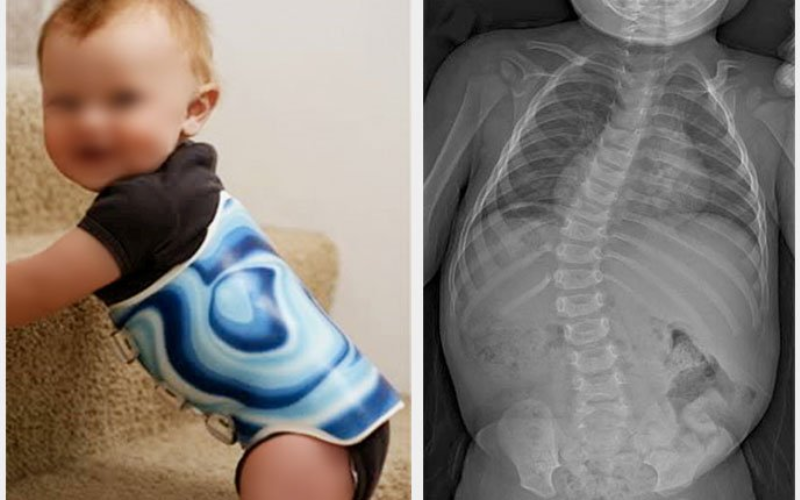Infant scoliosis is a condition characterized by abnormal spinal curvature in infants and young children. Scoliosis is more commonly seen in adolescents, but it can also occur in infants. Early diagnosis and therapy are key to facilitating normal spinal development. In this piece, we’ll take a closer look at infant scoliosis, including its symptoms, causes, and physical therapy’s role in its treatment.
Understanding Infant Scoliosis
The abnormal curvature of the spine in infants and young children (under the age of three) is referred to as infant scoliosis. Congenital conditions are those that are already established at birth, while developmental issues manifest themselves throughout the first year of life. Infant scoliosis requires immediate attention since it might hinder the maturation of the spine and other structures.
Risk factors and the causes
It is not always clear what causes scoliosis in infants. The expansion could be affected by a number of factors, some of which are:
- Muscle control and tone are impacted by congenital anomalies in the spine or vertebrae when neuromuscular disorders are present.
- Scoliosis in the family or due to genetics positioning issues throughout pregnancy or infancy, like spending a lot of time in one position
- While some child scoliosis instances may go away on their own, others may need treatment to stop the curvature from getting worse and possible problems.
Symptoms and Diagnosis
Signs and symptoms of scoliosis in infants can vary and may include:
- a misalignment of the hips or shoulders
- spinal curvature that’s clearly obvious impaired mobility
- Muscular or rib-cage asymmetry
Early detection and diagnosis are crucial for the successful implementation of treatment regimens. Pediatricians, orthopedic specialists, or spine specialists can diagnose the infant’s condition with the use of a physical examination, review of the infant’s medical history, and imaging tests like X-rays or magnetic resonance imaging (MRI).
The Role of Physical Therapy
Baby scoliosis management and treatment rely heavily on physical therapy. Its primary goals are to strengthen the spine and provide a more balanced muscle system. Expert pediatric physical therapists can assess the baby’s condition and come up with a therapy plan designed just for them.
Physical Therapy Treatments
Physical therapy for infants with scoliosis may involve:
- Gentle stretching exercises: Stretching exercises that focus on gently lengthening the muscles around the spine can help improve mobility and flexibility.
- Positioning techniques: Parents and other caretakers are educated on effective positioning techniques to lessen spinal stress and promote healthy posture.
- Specific exercises: Specific exercises are recommended to strengthen the core muscles that stabilize and protect the spine.
- Passive approaches: therapists may use light manual techniques or assistive devices to help realign the spine and promote good posture.
- The specific course of action will be determined by the severity of the curve, the child’s age and developmental stage, and the presence or absence of any underlying diseases that may be exacerbating the scoliosis.
Benefits of Physical Therapy for Infant Scoliosis
Young children with scoliosis can benefit in many ways from physical therapy:
- Improved spinal alignment: Through targeted exercises and repositioning techniques, physical therapy can help improve spinal alignment, which in turn promotes healthier growth.
- Enhanced muscle balance: Physical therapy, by addressing muscle imbalances and encouraging healthy muscle growth and function, can lead to improved muscle balance.
- Scoliosis Consequences: Scoliosis consequences can be mitigated if treatment begins early with physical therapy since this can prevent the curve from worsening and delay the need for more invasive treatments in the future.
- Complication prevention: Physical therapy aids not only the spinal development of children but also their overall motor development and functional skills.
Conclusion
Early diagnosis and treatment of newborn scoliosis are essential for promoting healthy spinal development. In order to correct muscular imbalances, improve alignment, and encourage overall growth, physical therapy is crucial in the treatment of neonatal scoliosis. Parents and guardians should consult with a pediatric physical therapist to develop a treatment plan that is specific to the child’s requirements. Physical therapy and early intervention can help infants with scoliosis have a better quality of life and stronger spine.

